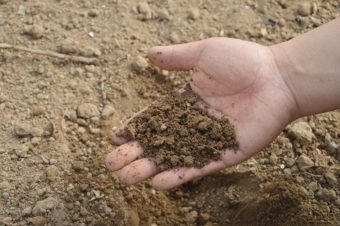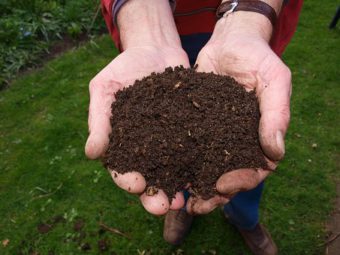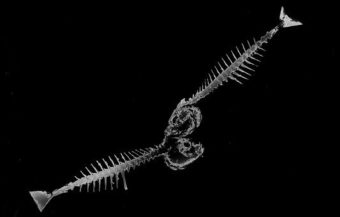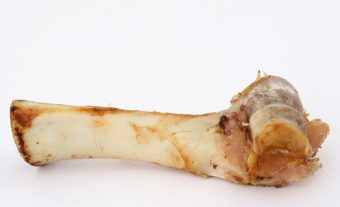In this article, we will be discussing if there is a difference between growmore and fish, blood and bone fertilisers? If so, which is better to use in the container garden?
In a previous article, I talked about the various element deficiencies that plants can suffer from. To overcome these deficiencies, we need fertilisers that particular add the main macronutrients of nitrogen, phosphorous and potassium.

When you buy fertilizers, you often see numbers on the packaging, which tells you the ratio of nitrogen to phosphorous, and potassium- for example, 7:7:7. This means that 7 % of the product will contain nitrogen, 7 % phosphorous and 7% by potassium. This tells you that the fertiliser is balanced and has the three main components in equal amounts.
This is where balanced fertilizers that are added as a granular feed around the plant to supply the necessary nutrients, which can feed the plant up to 6 weeks. This dry material that is applied to the compost gradually dissolves and is uptaken by the plants.
THERE ARE TWO COMMON GRANULAR FEEDS
The two most common granular feeds that are used by gardens are growmore and fish, blood and bone. They can be seen as a quick pick-me-up for plants and to give the plant a boast at the beginning of the growing season in spring, where plants are springing back to life. Both growmore and fish, blood and bones can be seen as balanced fertilisers.
The main difference is that fish, blood and bone is organically made out of natural waste products, whilst growmore is made out of inorganic compounds mixed together. That is the main difference, where fish, blood and bones are used for those who want to garden using organic principles, whilst growmore is for those who do not mind using synthetic, man-made products.

They are both just as effective as each other, the choice of which one to use is based on your preference. They are both short term fertilisers, only provided enough food for plants for 4 to 6 weeks. If you are looking for more long term fertilizers, which release their nutrients over a long period of time, then I suggest you read my article on slow-release fertilisers.
WHAT IS FISH, BLOOD AND BONE FERTILIZERS?
As mentioned previously, this is an organic, quick-acting fertilizer. It will provide plants with the necessary, nitrogen, phosphorous and potassium that they need in varying qualities. It is made out of three, separate fertilisers: fish meal, blood meal, and bone meals. Mixed in different qualities depending on who is manufacturing the product.
The nutrients also improve the beneficial culture in encouraging them to grow and flourish, in particular, bacteria and mycorrhiza fungi, thus helping the nutrient uptake.
Mineral uptake will be influenced by soil temperature, water content, pH and concentration of nutrients already present in the soil or compost. The fertilisers must be added when the plant needs it; too much fertiliser will not be uptaken by the plants but will run off and leach in the rain, and be wasted.
Soil bacteria will use some of the fertiliser for their own growth and wellbeing, which will encourage the plant to develop faster and healthier.
Fish, blood and bone has many uses in the garden from a general fertiliser, lawn fertiliser or as an addition to any container. It will help the plants in all of these cases.
WHEN TO USE?
It is best to apply fish, blood and bone before plants are actively growing, in March, which is an ideal month. This will give enough feed for 4 to 6 weeks, which is enough time for the plants to start growing. You can repeat dosage in early summer to give the plants an additional boost.
The plant will decide how much fertilise it will need to take up and when it will take it up. Over fertilising increase the chance of the plants leaves getting too weak (too much weak growth) or getting the leaves burnt. All you need to do is use half a handful per container (depending on size, use less for smaller containers) and then fork it in, so it becomes available to the plant at the roots. Application rates for fish, blood and bones normally 70g per square metre.
It can be used for all plants including trees, flowering plants, shrubs, fruit bushes, herbs, vegetables and bulbs. Blood meal is a good source of nitrogen that is great for leafy growth, whilst bone meal strengths the plant cells and helps stronger roots to form, whilst fish meal does a bit of both. Fish, blood and bone also help the uptake of micronutrients, thus help to make the plant healthier.
HOW MUCH NITROGEN, PHOSPHOROUS AND POTASSIUM IS THERE IN THE PRODUCT?
The answer to this question is dependent on how the fish meal, blood meal and bone meal are mixed and to what ratio. This is complicated by the age of the fertiliser, how much is applied, the weather it has been exposed to, the soil type and the microbial distribution, as this will change from batch to batch.
Each batch that is made will be different and will depend on the manufacturers’ specifications, but ballpark figures can be used.
Normally the nitrogen content is from 3 to 5.5%, Phosphorous from 5 to 8% and potassium 4 to 6%.
Fish, blood and bone strengthens the roots of the plant to encourage better plant growth, better crop and healthier composts and soils. Lack of fertiliser in the soil can weaken the roots, or they will send out feeder roots looking for new sources of nutrients. Most of the fertilizers will be used to upkeep these additional roots and promote better growth.
FISH MEAL
Fish meal is the leftover and unwanted products from the fishing industry, as more waste is produced than actually fish eaten. The unwanted fish, fish bones and fish trimmings are dried, pressed and grounded into the final product.

Fish meal, along with the other constituents contains a lot of nitrogen, which is taken up as nitrate by the plant roots. This is ideal for growing leafy vegetable, whilst the phosphorous content is great for root formation. It makes plants grow stronger and healthier. Fish meal tends to have a nitrogen; phosphorous and potassium ratio (NPK) of 10: 6: 2 and it contains some trace elements.
BLOOD MEAL
Blood meal is a slaughterhouse by-product, where the blood that are generated from pigs, sheep and cattle are used. The blood is dried and grounded into powder form, and because it comes from blood, it has a high nitrogen and iron content. Nitrogen is important for new, shoot growth and helps in controlling how carbon dioxide is absorbed. The carbon dioxide and water will combine in photosynthesis to produce sugar, which the plant uses to release energy.
Typically blood meal has an NPK of 12: 1: 1
BONE MEAL
Bone meal is made up of animal bones, carcasses and other animal waste products. The animal waste is treated, then dried and finally grounded into a fine powder. It provides the compost with a rich source of prosperous, calcium and micronutrients. Phosphorous is important for root development and seed formation.

Phosphorous need mycorrhiza fungi to break down the product and to help it be taken up via the roots of the plant.
Bone meal is insoluble in water and so it is only taken slowly by the plants.
This means you can use bone meal on its own in autumn to prepare the soil for next year. It has an NPK ratio of 3.5:18:0.
Bone meal completes the set.
Please note that dogs are attracted to the smell of fish, blood and done, so they will dig around your garden if they detect it. Try to keep dogs away from the product, as you do not want holes in your garden or your containers turned over, making a mess.
WHAT IS GROWMORE?
Growmore or National growmore to give its proper title, is an inorganic alternative to fish, blood and bone. It is a relatively modern invention due to necessity during the Second World War, as part of the dig for victory campaign, where potash was in great shortage. Potash was normally minded in Germany and as a result of war it was not readily available, and alternatives had to be found.
It is a mixture of potash, phosphate and nitrate from mined sources, or by chemical manufacture. Food was short, the land needed fertilizing and new fertilisers need to be developed, quickly. A product that was developed during the Second World War is now available as growmore and still widely used in the UK.
The formulation was developed ad hoc, with testing being a premium as farming lands were not tested individually. That is why a standardised approach was developed in the time of need. As it is made artificial the NPK ratio can be controlled better; the quote ratio in growmore is 7% nitrogen, 7% phosphorous pentoxide and 7% potassium oxide.
This does not equate to an NPK ratio of 7:7:7 but actually converts to NPK of 7:3.8:5.8, so it is not a totally balanced fertiliser that some make it out to be. It contains more nitrogen than the other elements and no trace elements are present, which can be found in fish, blood and bone.
Ideally, 70 to 140 g per square metre should be added for most plants, less required for leafy crops such as lettuce. To give an idea of scale, a handful should equate to 35 grams, so in a container, you will need to use less than half a hand full.
You can say the application rates are also similar for both products.
WHICH ONE DO YOU USE?
As you can see both products have their own merits, and its use is dependent if you want to go down the organic route or inorganic route, With fish, blood and bone the ratio of NPK will change with the manufacturer and the batch made and so will provide NPK of different levels, which may not work as well for plants suffering from major deficiencies of these elements.
With growmore, you are certain to get a constant NPK ratio and so there is much more control to how much should be added to the compost. With fish, blood, and bone adding the same application rate could result in more nutrients being given at the expense of others. This could result in one element being still in deficiency, which has not been addressed properly.
This is highly unlikely but there is a very remote possibility that a severe deficiency in one element can remain after the fertiliser has been added. It can be reduced but it may not be totally eliminated.
WHICH ONE DO I PREFER?
I have used both products with great results and I have no preference. The application rate is quite similar. Less for fish, blood and bone and so you can save some money. The costs are roughly the same and so you are spoilt for choice.
If you are into organic gardening then fish, blood and bone is the product for you, or if you are not bothered as long as the product does the job, then you can use either. To give an idea of cost per square metre, growmore will cost around 10p and fish, blood and bone will cost around 5p for the recommended application rate.
The choice is yours to make.
If you have any question or comments that you wish to make, please do so in the comment box below.
Get fertilizing to succeed.



Thanks a lot for sharing with us this amazing tips and explanation about this organic fertilizer. It is very important that plants have the necessary supplements to grow and be healthy. Indeed, potassium and nitrogen play a very important role in this phenomenon of fertilization and that is why I think fish, blood and bones are good fertilizers.
I saw that you put this product here Miracle-Gro Fish Blood & Bone Natural Plant Food 10 kg and it has a very low price of Amazon for only £15. I will definitely buy this product so that my plants have everything they need. Thanks again for this amazing tips.
Hi Nimrodngy
It is always good to get feedback and opinions from someone like yourself. It is a not a clear choice to which one to use as both can fill the same role and it is up to you to come to an opinion to which one you prefer. I have used both and they both work as well as each other. I have no preference.
Thanks
Antonio
Hi Antonio!
So, if I understand well growmore and blood, fish and bone are both good fertilizer. But for organic gardening, it is best to use blood, fish, and bone. Now how will growmore affect the quality of the plant? I think that is the great debate in my mind, can a fertilizer affect the quality of the end product?
I have never used fertilizer per se, I put banana skins in the soil before planting but I think it does not really last, that is why I am looking into fertilizer now.
Thanks for another great post!
Hi Adyns
That question has plagued gardeners for a long time to go organic or not. Growmore will most certainly not hurt your plants and it is up to you to decide which one to use. All plants need to be fed, otherwise, they will not perform and will look said. What I say is a well-fed plant is a happy plant.
Thanks
Antonio
Hello Antonio, I must say that this article is very helpful and informative. I did hear about Growmore recently but honestly, I did not know about its benefits for our plants. Thank you for sharing info about it in detail, I will definitely get it for my garden. It is not expensive after all yet quality.
Hi Danijel
Thank you for stopping by and commenting. I am a great believer in giving people choice and presenting both sides of the argument, so you can make an informed decision.
Kind regards
Antonio
Thank you for all the information. May I suggest that perhaps it is a good idea to alternate Growmore with Fish, Bone and Blood throughout the year. Then the best of both worlds is achieved.
Hi Jane
It depends on your preference as one is more organic than the other. If you want to use growmore than use growmore but if you prefer blood, fish and bone than use that.
Thank you
Antonio